Fruit flies can be a nuisance in any home. Still, they can be especially frustrating when they decide to make entry into your home with your fresh fruits and vegetables. These tiny pests can quickly multiply and ruin a good batch of produce. But don’t worry. Getting rid of fruit flies in your vegetables is possible with a bit of patience and some simple techniques. When you bring in tomatoes, squash, or other garden produce, an infestation can quickly begin indoors. Let’s check out how to get rid of fruit fly in vegetables below.
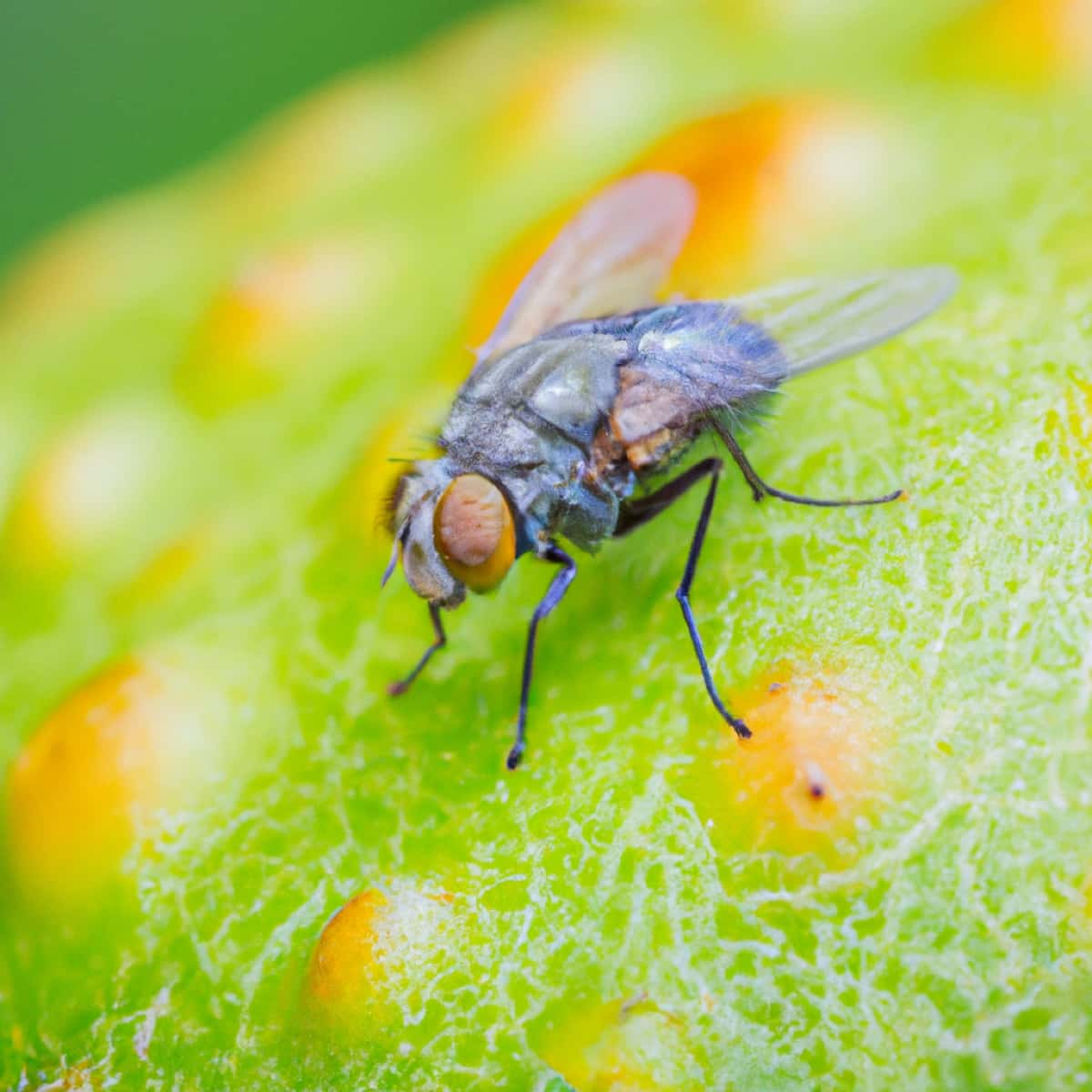
They’reThey’re also drawn to overripe bananas, potatoes, onions, and other unrefrigerated produce left on your counter or in your cupboard. They are also drawn to anything containing alcohol or vinegar. Although overripe fruits and vegetables are their preferred breeding grounds, they will also breed in anything moist with some fermenting material, such as drains, garbage disposals, garbage cans, and cleaning rags.
In this blog post, we’ll go over the most effective ways to eliminate fruit flies from your fruits and vegetables so that you can enjoy your product without any unwanted pest infestation. This article will offer you the information you need to maintain your fruits and vegetables free of fruit flies, whether you’re a seasoned gardener or new to the world of fruit and vegetable gardening. So, let’s get started and figure out how to eliminate these bothersome pests.
How to get rid of fruit fly in vegetables
What are fruit flies in vegetables?
Fruit flies are small insects that are often found in homes and gardens. They are attracted to overripe fruits and vegetables. They are recognizable by their red eyes and yellowish bodies. Still, they are very small and fly quickly, making them hard to see. They have a short life cycle of about 8-10 days and reproduce quickly, laying about 500 eggs at a time. They are considered pests because they can spread bacteria and are difficult to eliminate once they infest an area.
Where do fruit flies come from?
Fruit flies are found in homes and commercial settings, especially in the summer and early fall. They are attracted to ripe and overripe fruits and vegetables, fermented beverages, and other sugary substances. Fruit flies can come into a home through open doors or windows or be brought in on fresh produce or other items. They breed in drains, garbage disposals, garbage cans, and other moist areas with fermenting material. Additionally, they can also come in through shipping containers and other packages.
In case you missed it: Key Rules to Get Rid of Fruit Fly in Mango: Symptoms, How to Treat, Management, Chemical, and Organic Control
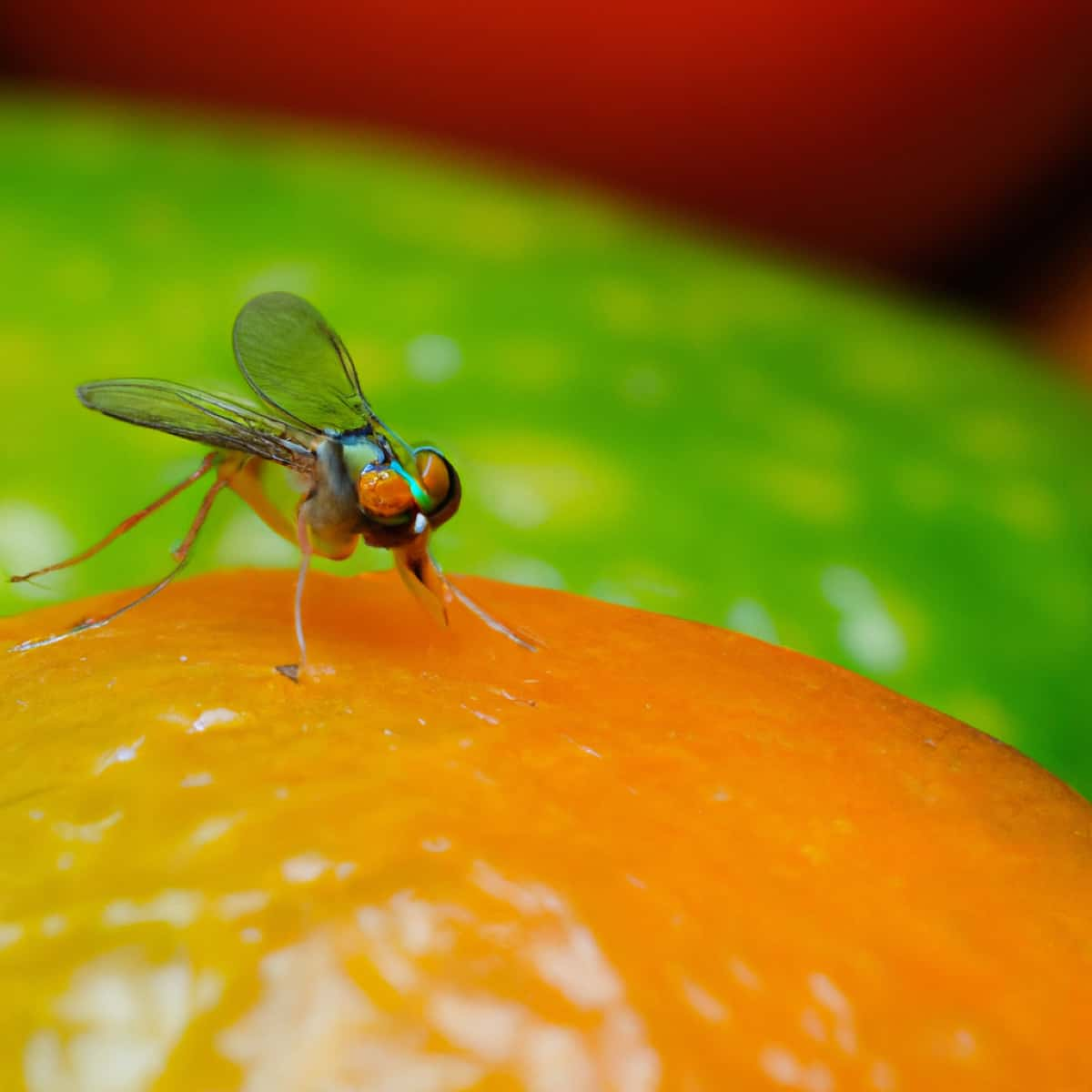
Sources of fruit flies for infection lay their eggs on any food waste or wet organic matter, such as overripe fruits or vegetables, kitchen trash cans, recycling bins, food scrap containers for compost, garbage disposals, sink or shower drains, produce drawers in refrigerators, mops and cleaning rags. To get control of fruit flies, it’s important to kill adult flies and find and clean the areas where they lay their eggs. It will stop the breeding cycle and prevent new fruit flies from appearing.
Methods for preventing fruit fly infestations in vegetables
There are several methods for preventing fruit fly infestations in vegetables. Some of the most effective include:
- Properly storing produce: Keep fruits and vegetables in the refrigerator or airtight containers. It will make it harder for fruit flies to access and lay eggs on the produce.
- Regularly cleaning kitchen surfaces: Wipe down counters, sinks, and other kitchen surfaces regularly to remove any food debris or spills that might attract fruit flies.
- Properly disposing of food scraps: Place them in sealed trash bags and dispose of them in outdoor trash cans.
- Using traps: Fruit fly traps can be made using various materials, such as apple cider vinegar, dish soap, and brown sugar. These traps can be placed in areas where fruit flies are commonly found.
- Sticky tape or glue traps are small pieces of tape or glue placed in areas where fruit flies are commonly found. They trap the Fruit flies when they land on them.
- Using natural predators: Introducing natural predators like ladybugs or parasitic wasps into your garden can help keep fruit fly populations in check.
- Regularly inspect the garden and surrounding areas: Check for rotting or overripe fruits and vegetables on the ground, and remove them promptly.
- Using pesticides: If the infestation is severe, use pesticides to eliminate the fruit flies. Be sure to choose a safe pesticide for use around fruits and vegetables and follow the instructions on the Label.
How to catch and kill fruit flies?
- Using a trap: A simple trap can be made using apple cider vinegar, dish soap, and brown sugar. Mix equal parts of the three ingredients in a small container and leave it out in areas where fruit flies are commonly found. The flies are attracted to the mix and trapped in the liquid.
- Sticky tape or glue traps are small pieces of tape or glue placed in areas where fruit flies are commonly found. They trap the Fruit flies when they land on them.
- Using a vacuum cleaner: Use a vacuum cleaner to suck up any Fruit flies you see flying around. Be sure to empty the vacuum cleaner bag or container immediately to prevent the flies from escaping.
- Using a bug zapper: Electric bug zappers can effectively catch and kill fruit flies.
- Using pesticides: If the infestation is severe, use pesticides to eliminate the fruit flies. Be sure to choose a safe pesticide for use around fruits and vegetables and follow the instructions on the Label.
- Using a Homemade spray: Mixing water with dish soap and peppermint oil can help, as peppermint oil is an effective natural insect repellent.
In case you missed it: Key Rules to Get Rid of Fruit Fly in Guava: Symptoms, How to Treat, Management, Chemical, and Organic Control
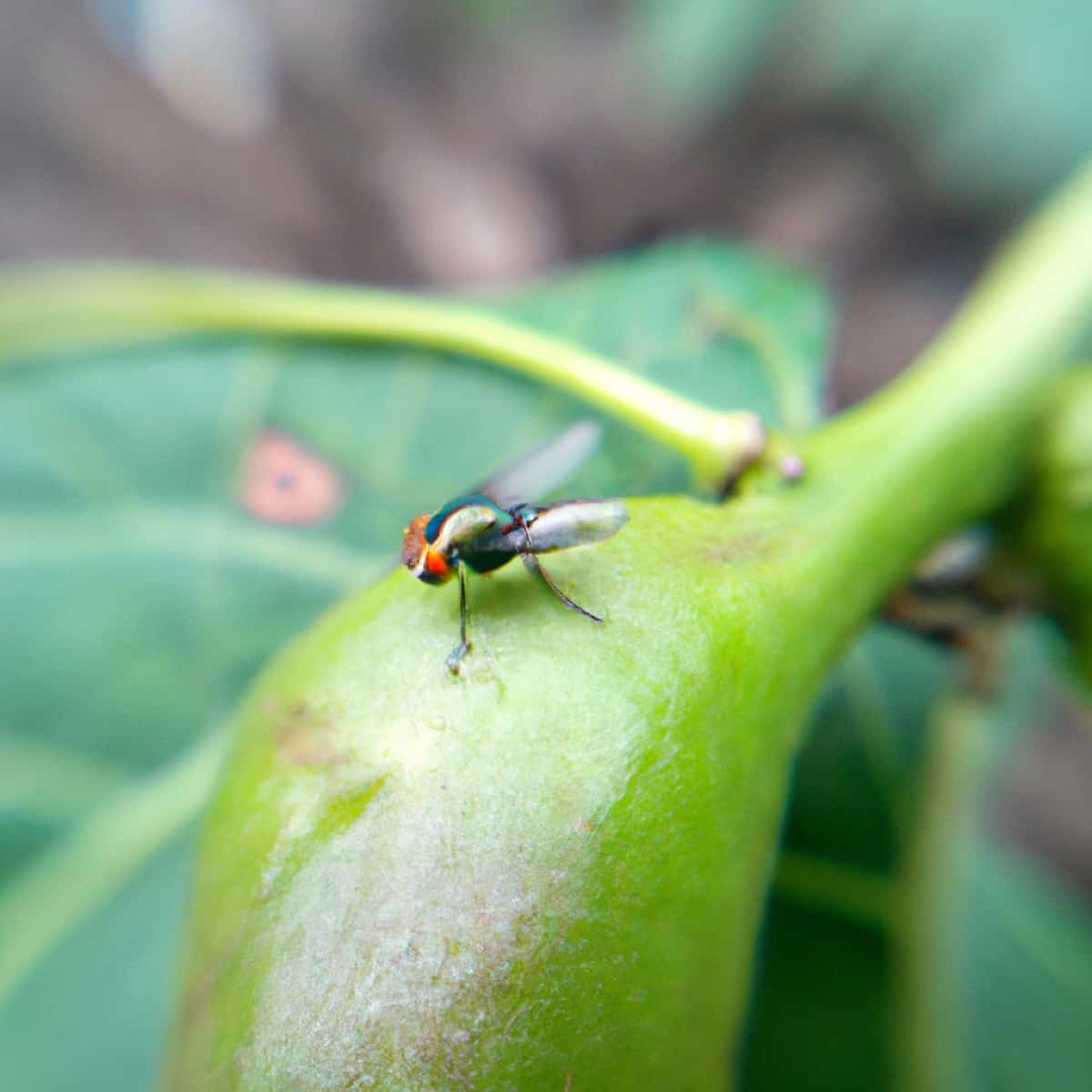
Symptoms of fruit fly damage in vegetables
- Discoloration or browning of the Fruit or Vegetable
- Softening or rotting of the Fruit or Vegetable
- Small, pin-sized holes in the Fruit or Vegetable
- Presence of fruit fly larvae or maggots in the Fruit or Vegetable
- Reduced yield or crop loss
How to control/ get rid of fruit flies naturally in vegetables?
- Traps: You can use a trap to lure and capture fruit flies. A simple trap can be made by filling a jar with apple cider vinegar, a drop of dish soap, and a piece of Fruit. The fruit flies were attracted to the vinegar and trapped in the jar.
- Herbs: Planting herbs such as basil, mint, or tansy near your vegetables can help repel fruit flies.
- Companion planting: Planting certain vegetables near each other can also help repel fruit flies. For example, planting onions near your tomatoes can help keep fruit flies away.
- Cleanliness: Keep your garden clean of fallen Fruit and vegetables, as they can attract fruit flies.
- Beneficial Insects: Introducing beneficial insects helps to control the pest. Beneficial insects such as ladybugs, lacewing, and parasitic wasps can help control the fruit fly population.
- Remove overripe vegetables: Overripe vegetables are more attractive to fruit flies, so remove them promptly.
Different fruit fly traps for vegetables with a step-by-step guide
Apple Cider Vinegar trap
- Fill a small container, such as a jar or glass, with equal parts apple cider vinegar and water.
- Add dish soap to the mixture to break the surface tension of the liquid, so the flies will sink when they land on it.
- Place the container near your vegetables and Fruit.
- Fruit flies, attracted to the smell of the vinegar, fly into the container and become trapped in the liquid.
Red Wine trap
- Fill a small container with a small amount of red wine.
- Place the container near your vegetables and Fruit.
- The Fruit flies to attract the wine and fly into the container, becoming trapped.
Plastic Bag trap
- Fill a plastic bag with overripe Fruit or vegetables.
- Tie the bag closed and poke a few small holes in it.
- Suspend the bag near your vegetables and Fruit.
- The Fruit flies are attracted to the overripe Fruit or vegetables and fly into the bag through the holes, becoming trapped inside.
In case you missed it: How to Start Pig Farming in Mexico: Business Plan, Breeds, Setup Cost, Profit, and Requirements

Chemical traps to control fruit fly in vegetable
Chemical traps can be an effective method for controlling fruit flies in the home. Still, it’s important to use them safely and responsibly. Here are some steps for making a chemical trap:
- Purchase a commercial fruit fly trap or make your own using a small container, such as a jar or glass.
- Mix a water solution and an attractant, such as apple cider vinegar or red wine, in the container. You can also use a commercial lure.
- Add a small amount of pesticide, such as malathion or pyrethrin, to the solution. Use the appropriate amount of insecticide for the quantity of the bottle and the type of fruit fly to be controlled.
- Place the container near your fruits and vegetables.
- Check the trap regularly, dispose of the dead fruit flies, and replace the solution and pesticide as needed.
Cultural techniques to control fruit fly vegetables
To control fruit fly populations, it is important to identify the fruit fly species present properly. Sterilization of the crop by properly managing fallen fruits, early harvesting, variety selection, pruning, and crushing infested fruits are all effective techniques for controlling fruit flies. Simple control methods such as apple vinegar and dishwashing liquid in a jar with small holes can also be effective. It is also important to avoid growing different varieties of Fruit in the same field and to keep weeds under control as they can act as an alternative host for fruit flies.
Biological techniques to control fruit fly in vegetables
Biological techniques for controlling fruit flies include the National Fruit Fly Control Program, which uses bait to attract and control fruit fly populations in selected areas. The sterile technique uses bait on the leaves’leaves’ lower sides to attack the flies’flies’ reproductive system. Predators such as ants, rove beetles, spiders, and bugs can also effectively control fruit fly maggots.
Food attractants and pheromones can trap specific fruit flies, such as the Ceratitis, Dacus, and Bactrocera species. Parasitoids like P.humilis, Fopius arisanus, and Diachasmimorpha are also natural enemies of fruit flies. Bagging premature Fruit and using traps such as yellow panel, adhesive sheet, and plastic Mcphail, champ trap, Jackson trap, Steiner trap, and tephri trap are also effective ways to control fruit fly populations.
In case you missed it: Key Rules to Start a Greenhouse Farming in Mexico: Business Plan, Setup Cost, Profit, and Management
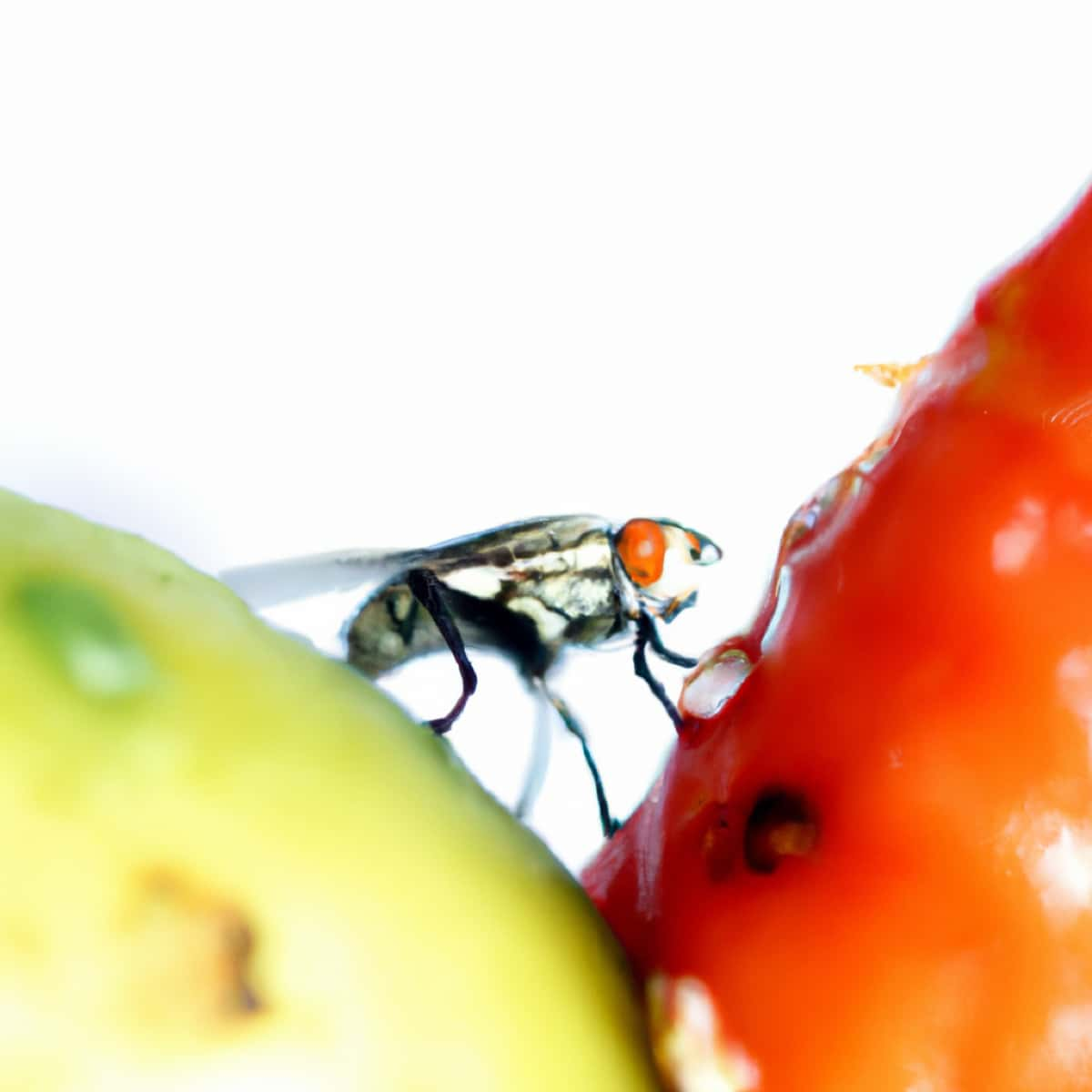
Chemical techniques to control fruit fly in vegetables
Chemical techniques for controlling fruit flies include the Male Annihilation Technique (MAT), which targets the male fruit flies, and the use of fiber blocks saturated with a male sex attractant and insecticide. Bait spray application is a technique that uses a mixture of an insecticide and a food attractant to target specific species of fruit flies.
Phloxine B and Spinosad are insecticides that are effective against fruit flies. Soil treatment using chemicals like Diazinon and Fenthion can also effectively control fruit fly maggots. Mass trapping using female attractant on traps is also used to control adult fruit flies, with one treatment lasting four months.
Post-harvest techniques to control fruit fly in vegetable
The warm water path technique kills maggots or microorganisms inside fruits, especially mango, before export. The Fruit is thrown into hot water for one hour at 46-48 degrees Celsius. Hot water vaporing, which exposes the fruit’sfruit’s pulp to hot water at 46.2 degrees Celsius for 30 minutes, is also used to kill Bactrocera zonata in fruits such as mango and guava.
Cold treatment, which exposes fruits such as citrus and pomegranate to 1.7 degrees Celsius for 14 days, is a costly but effective way to kill all stages of Bactrocera zonata and make the fruit infestation-free. Fruit Flies are more prone to rotting Fruit and vegetables, which could be attracting them. Another possibility is that there’s something else in your garden attracting flies, like a compost pile or pet food bowl.
The weather can also be a factor, as flies thrive in warm and humid conditions. Other pests in your garden, such as aphids or whiteflies, can attract flies. To keep flies away, you can use sticky traps, natural predators, apple cider vinegar and dish soap traps, homemade sprays, crop rotation, neem oil, and essential oils such as peppermint, lavender, and lemongrass. You can also use a warm water bath, hot water vaporing, cold treatment, bait spray application, and mass trapping.
In case you missed it: Dairy Entrepreneurship Development Scheme in India: DEDS Benefits, Eligibility, and How to Apply
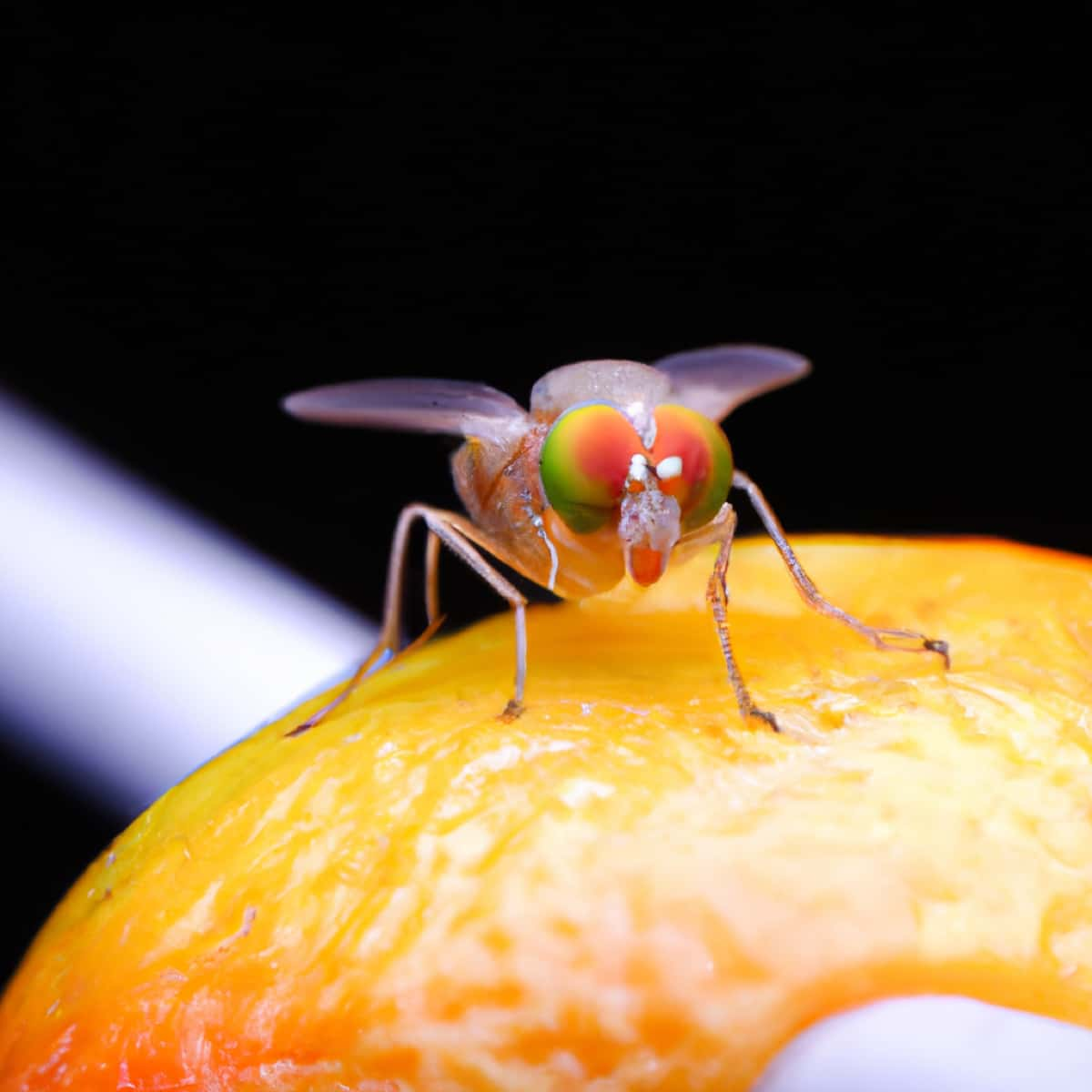
Conclusion
Fruit flies in vegetables can be a frustrating problem for gardeners and farmers. However, by understanding the symptoms and causes of the infestation, as well as the available treatment options, it is possible to manage and control these pests effectively. Chemical control methods, such as pesticides, can be effective but may negatively impact the environment.
Organic control methods, such as trapping and natural predators, are a more sustainable option and can also be just as effective in getting rid of fruit flies. By combining these management techniques, you can protect your vegetable crop and enjoy a bountiful harvest.
- Types of Pesticides Used in Agriculture: A Beginner’s Guide
- Economical Aquaculture: A Guide to Low-Budget Fish Farming
- 15 Common Planting Errors That Can Doom Your Fruit Trees
- How to Make Houseplants Bushy: Effective Tips and Ideas
- Innovative Strategies for Boosting Coconut Pollination and Yield
- Pollination Strategies for Maximum Pumpkin Yield
- The Complete Guide to Chicken Fattening: Strategies for Maximum Growth
- Natural Solutions for Tulip Problems: 100% Effective Remedies for Leaf and Bulb-Related Issues
- Revolutionizing Citrus Preservation: Towards a Healthier, Greener Future
- Natural Solutions for Peony Leaf and Flower Problems: 100% Effective Remedies
- Maximizing Profits with Avocado Contract Farming in India: A Comprehensive Guide
- Natural Solutions for Hydrangea Problems: 100% Effective Remedies for Leaf and Flowers
- The Ultimate Guide to Choosing the Perfect Foliage Friend: Bringing Life Indoors
- From Sunlight to Sustainability: 15 Ways to Use Solar Technology in Agriculture
- The Ultimate Guide to Dong Tao Chicken: Exploring from History to Raising
- The Eco-Friendly Makeover: How to Convert Your Unused Swimming Pool into a Fish Pond
- Mastering the Art of Delaware Chicken Farming: Essentials for Healthy Backyard Flocks
- 20 Best Homemade Fertilizers for Money Plant: DIY Recipes and Application Methods
- How to Craft a Comprehensive Free-Range Chicken Farming Business Plan
- Brighten Your Flock: Raising Easter Egger Chickens for Beauty and Bounty
- How to Optimize Your Poultry Egg Farm Business Plan with These Strategies
- Subsidy for Spirulina Cultivation: How Indian Government Schemes Encouraging Spirulina Farmers
- Ultimate Guide to Raising Dominique Chickens: Breeding, Feeding, Egg-Production, and Care
- Mastering the Art of Raising Jersey Giant Chickens: Care, Feeding, and More
- Ultimate Guide to Raising Legbar Chickens: Breeding, Farming Practices, Diet, Egg-Production
- How to Raise Welsummer Chickens: A Comprehensive Guide for Beginners
- How to Protect Indoor Plants in Winter: A Comprehensive Guide
- Ultimate Guide to Grow Bag Gardening: Tips, Tricks, and Planting Ideas for Urban Gardeners
- Guide to Lotus Cultivation: How to Propagate, Plant, Grow, Care, Cost, and Profit
- Agriculture Drone Subsidy Scheme: Government Kisan Subsidy, License, and How to Apply Online
- Ultimate Guide to Raising Araucana Chickens: Breed Profile, Farming Economics, Diet, and Care
- Bringing Hydroponics to Classroom: Importance, Benefits of Learning for School Students
- Ultimate Guide to Raising Polish Chickens: Breed Profile, Farming Economics, Diet, and Care
- Ultimate Guide to Raising Australorp Chickens: Profile, Farming Economics, Egg Production, Diet, and Care
- Silkie Chicken Farming: Raising Practices, Varieties, Egg Production, Diet, and Care
- Sussex Chicken Farming: Raising Practices, Varieties, Egg Production, Diet and Care